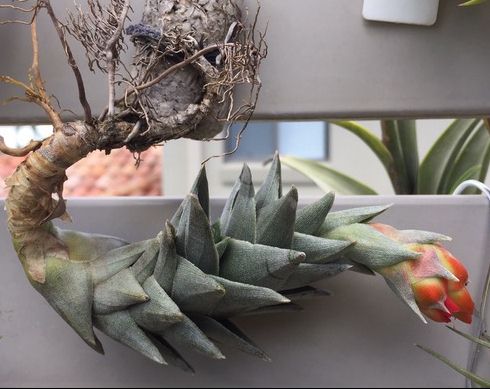
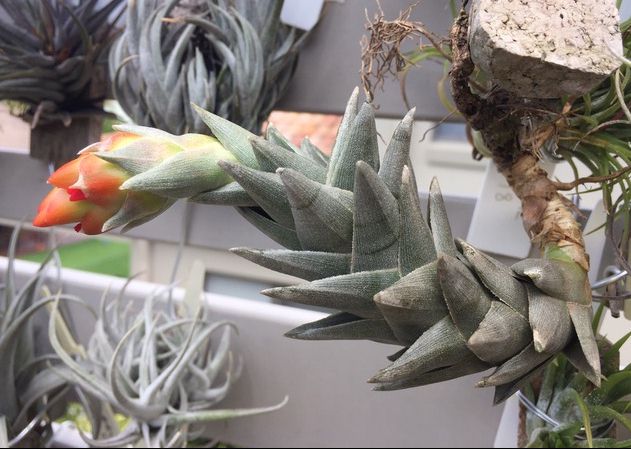
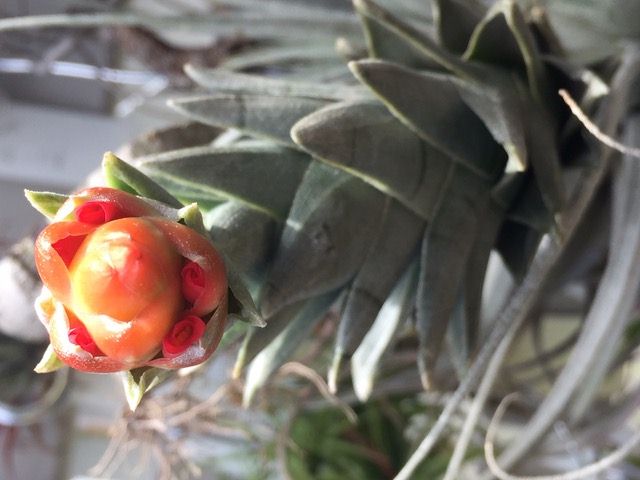
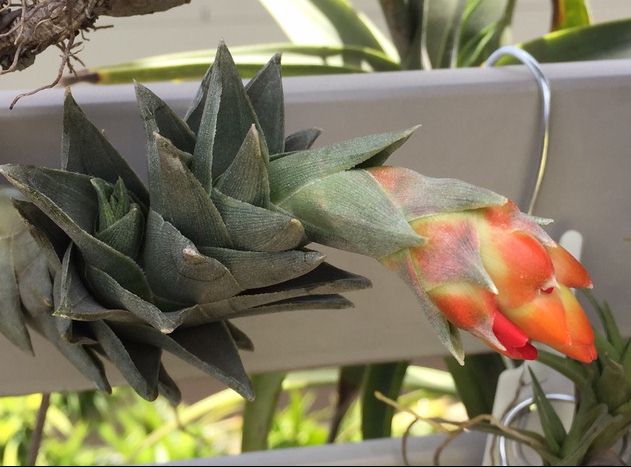
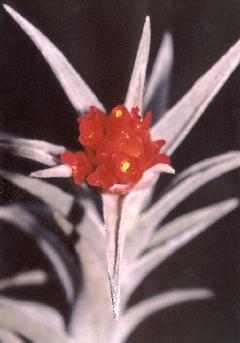
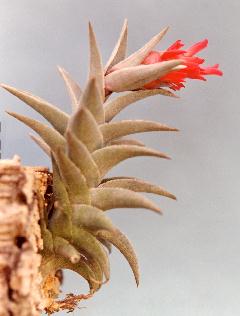
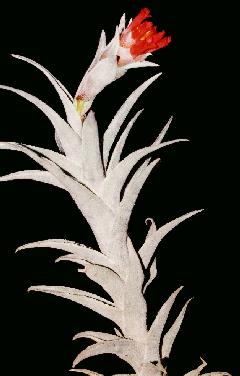
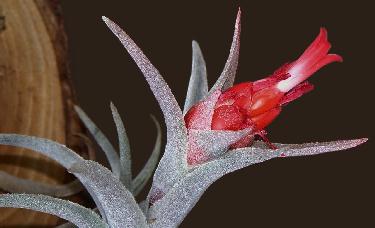
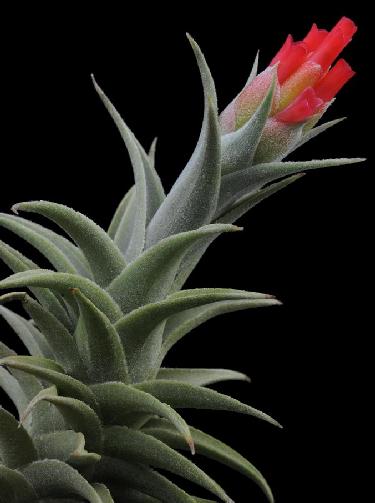
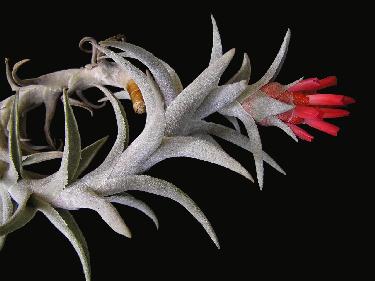
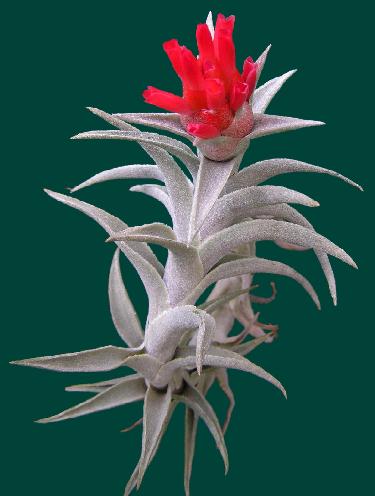
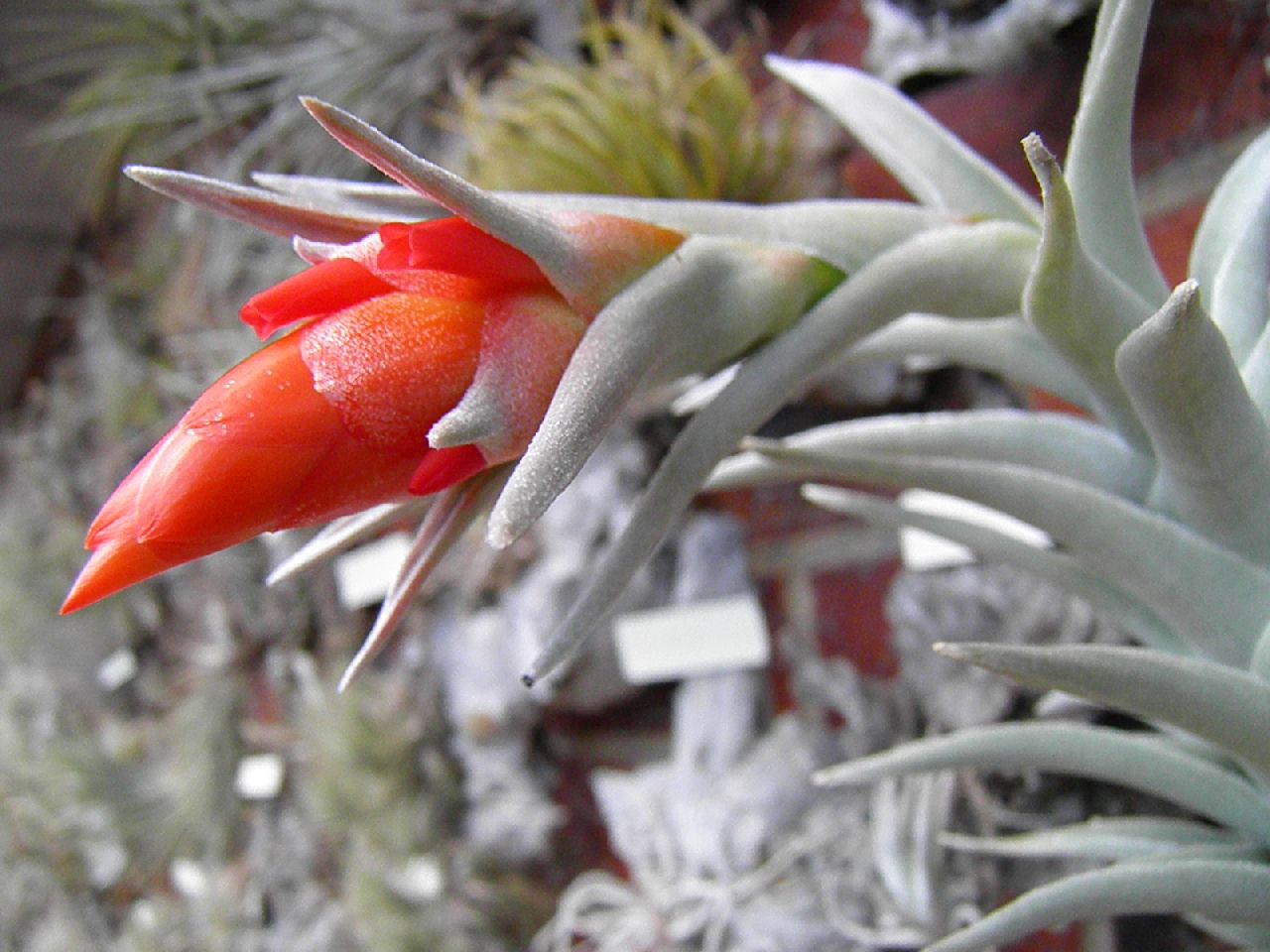
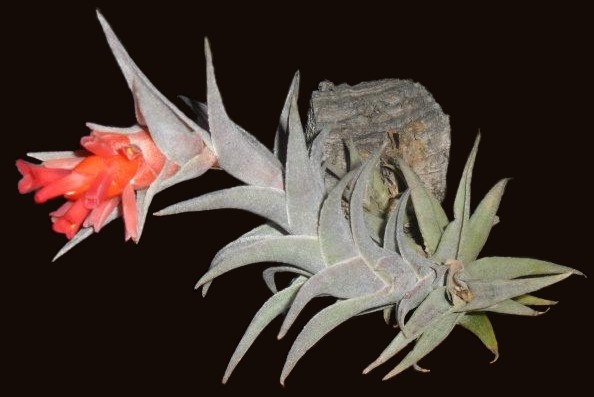
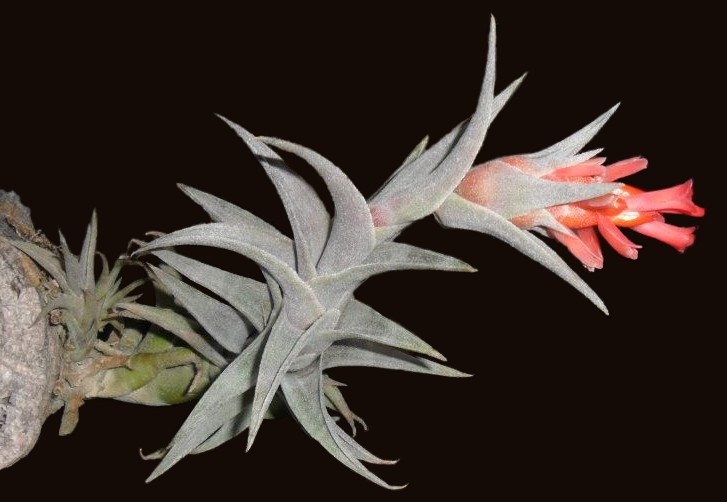
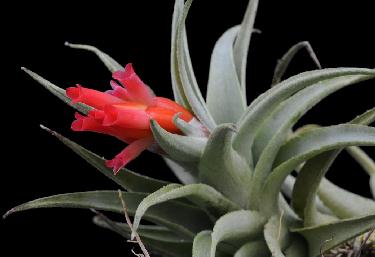
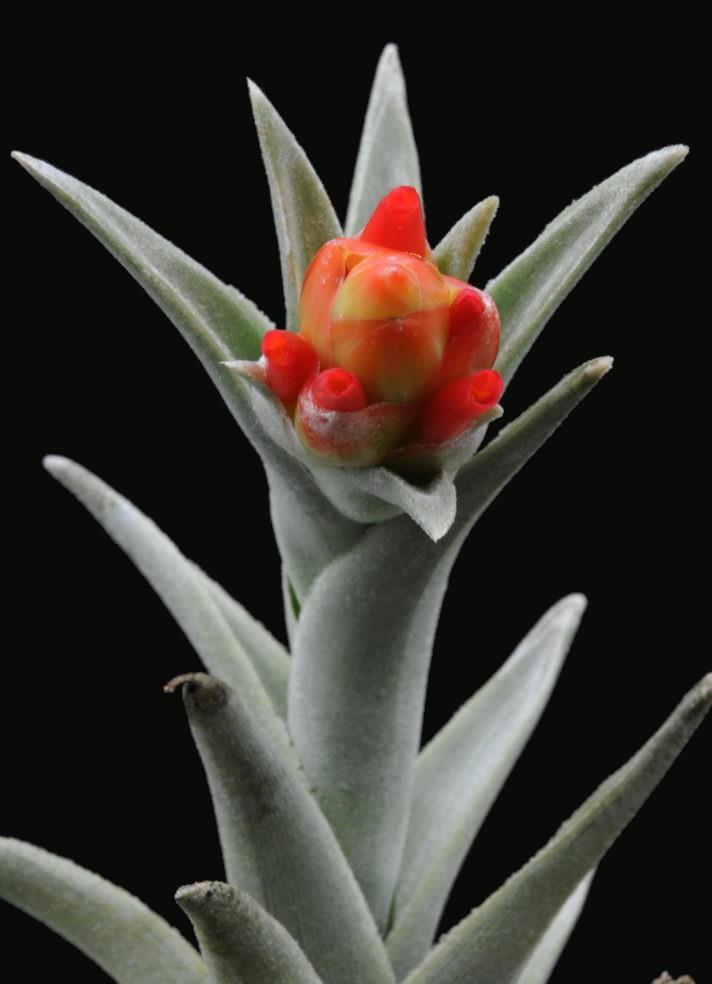
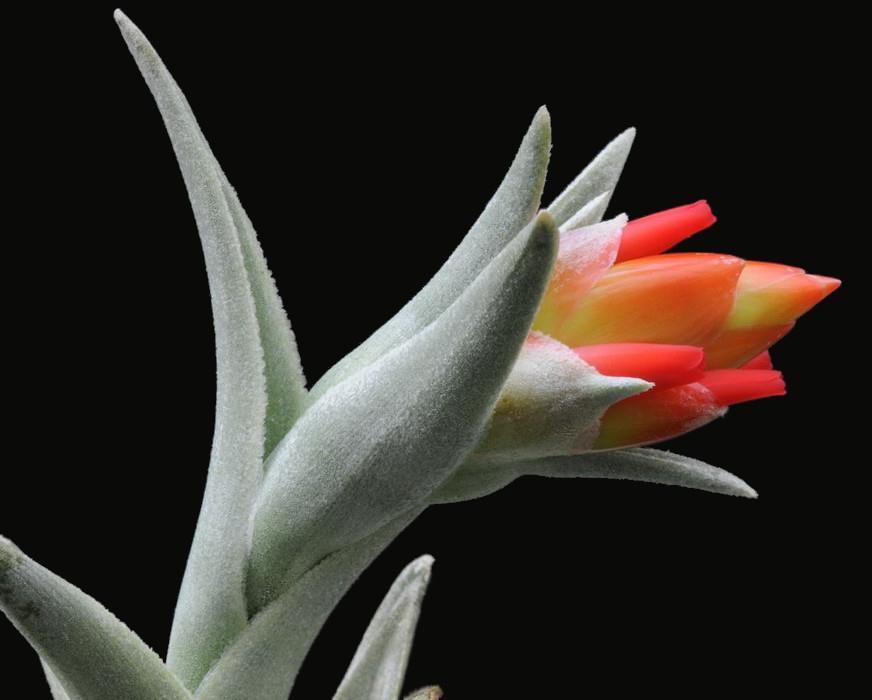
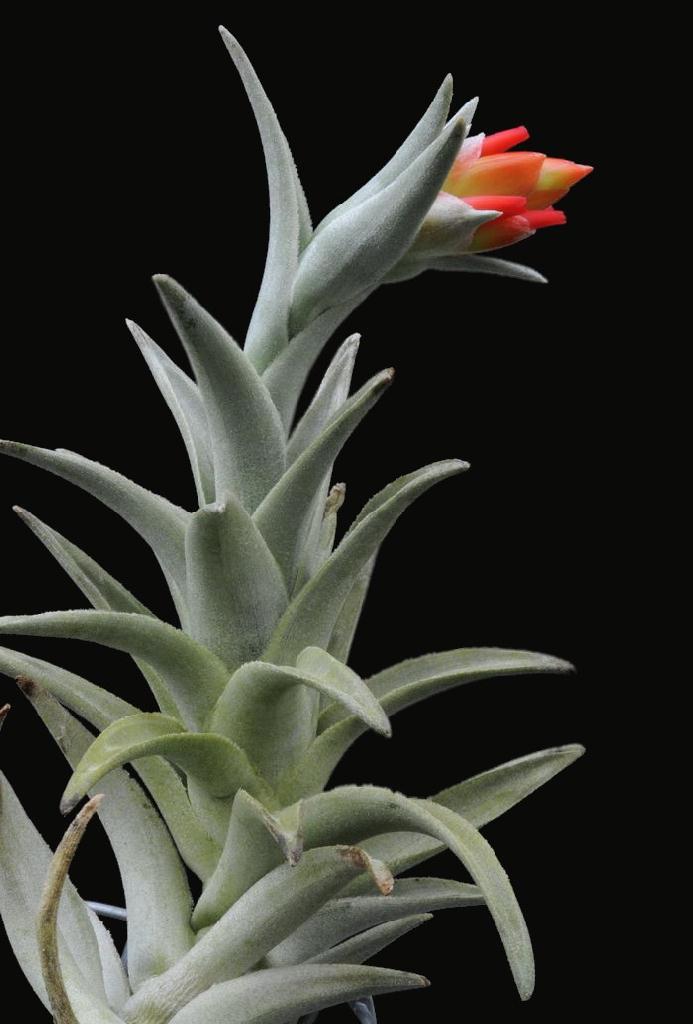
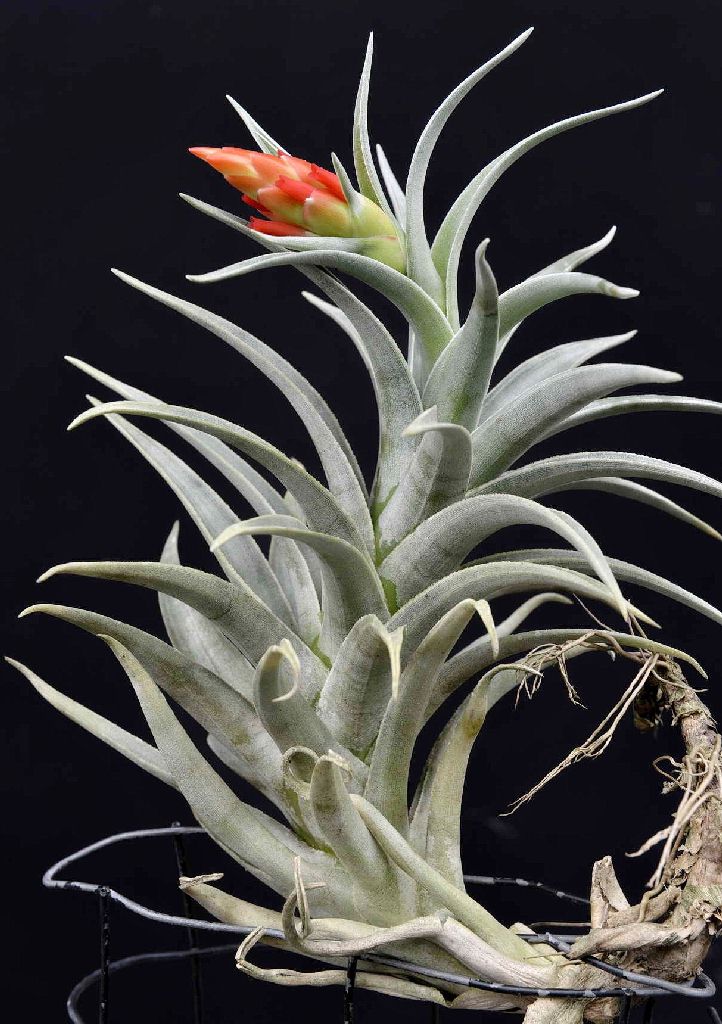
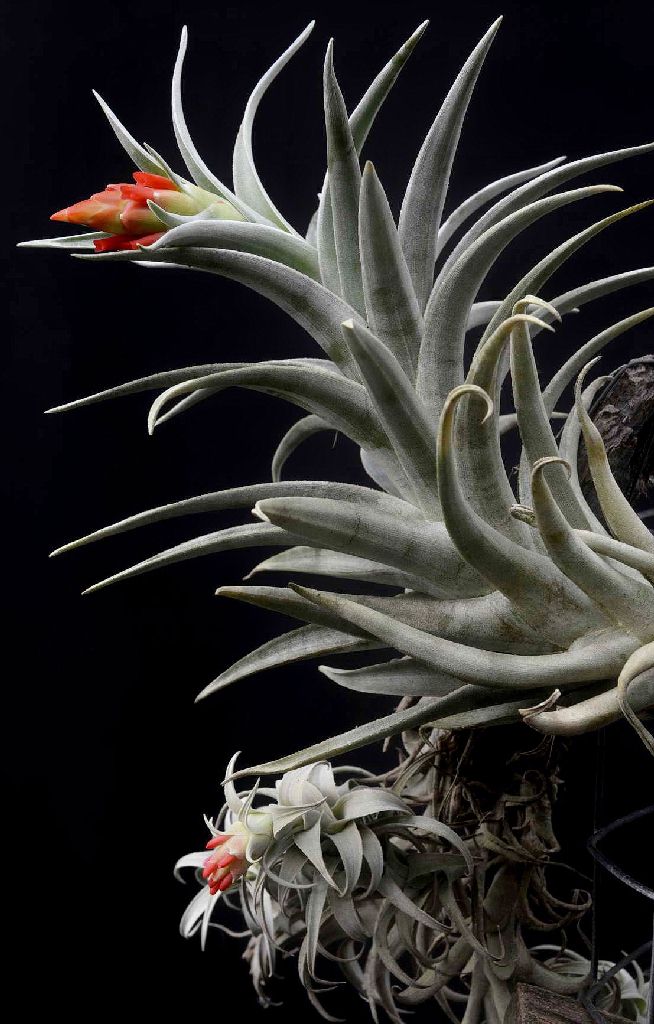
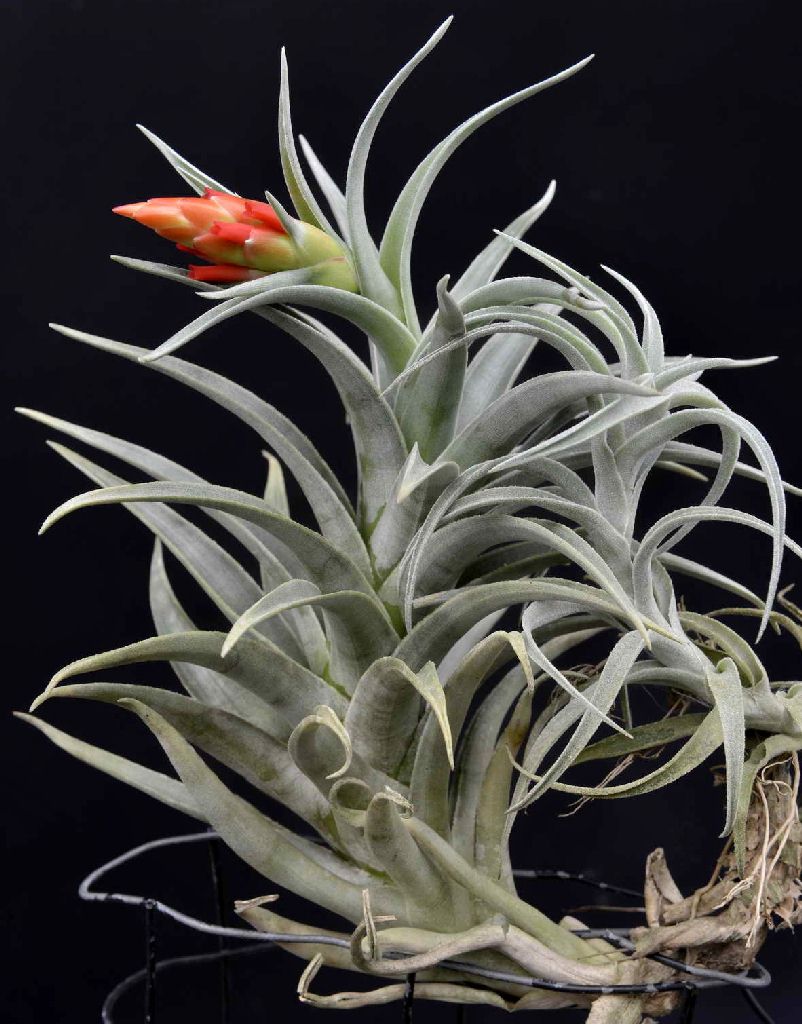
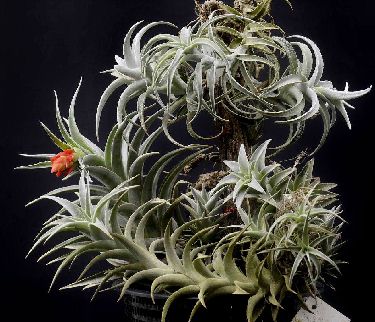
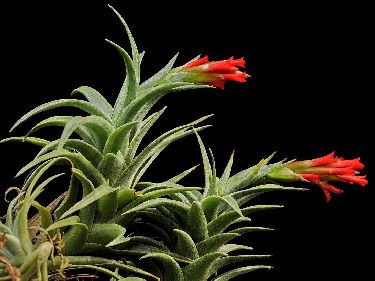
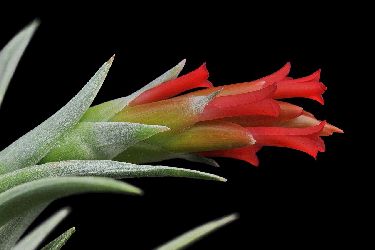
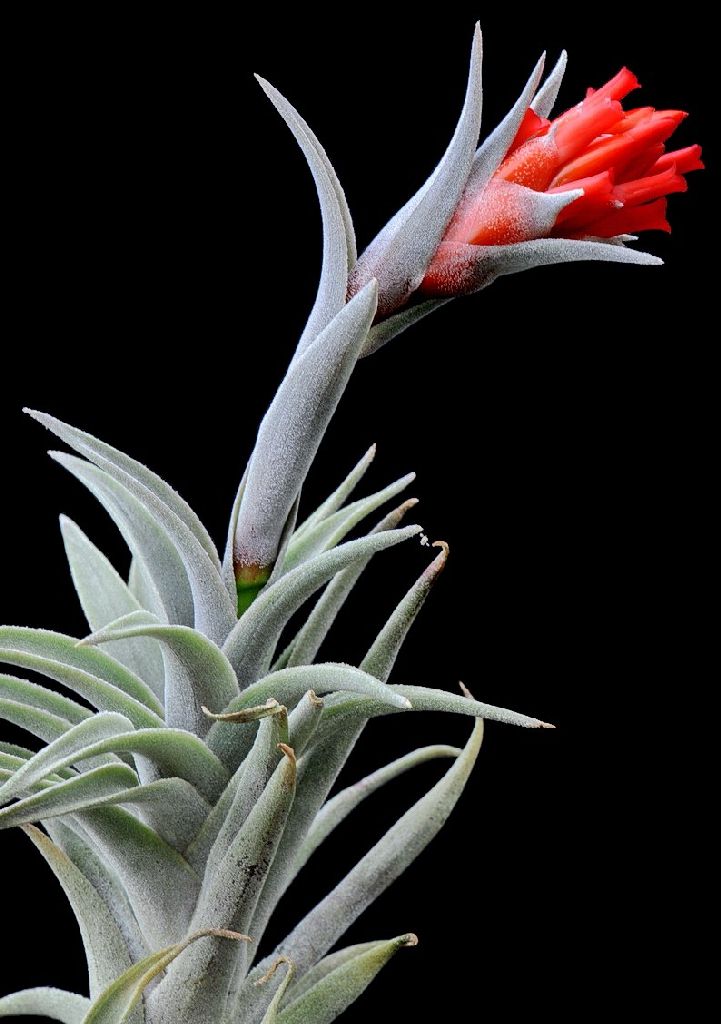
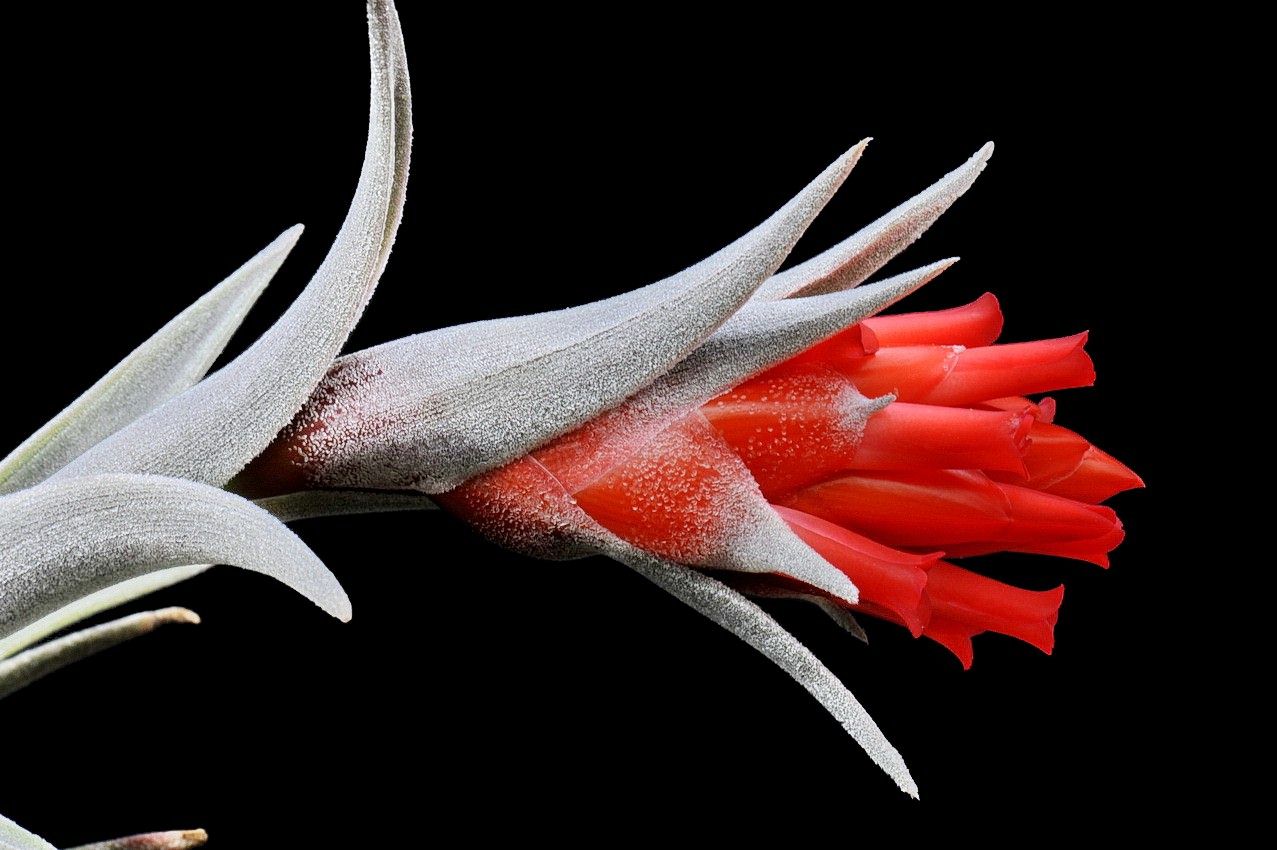
| Peter Tristram 01/13. From 2010 trip to Germany. Dark emerald green leaves, slightly different from the other ‘green’ forms I have imported a few years ago. I have noticed that they all prefer some shade and are quite slow growing. Maybe the green forms grow on shady cliffs. var. araucariifolia? |
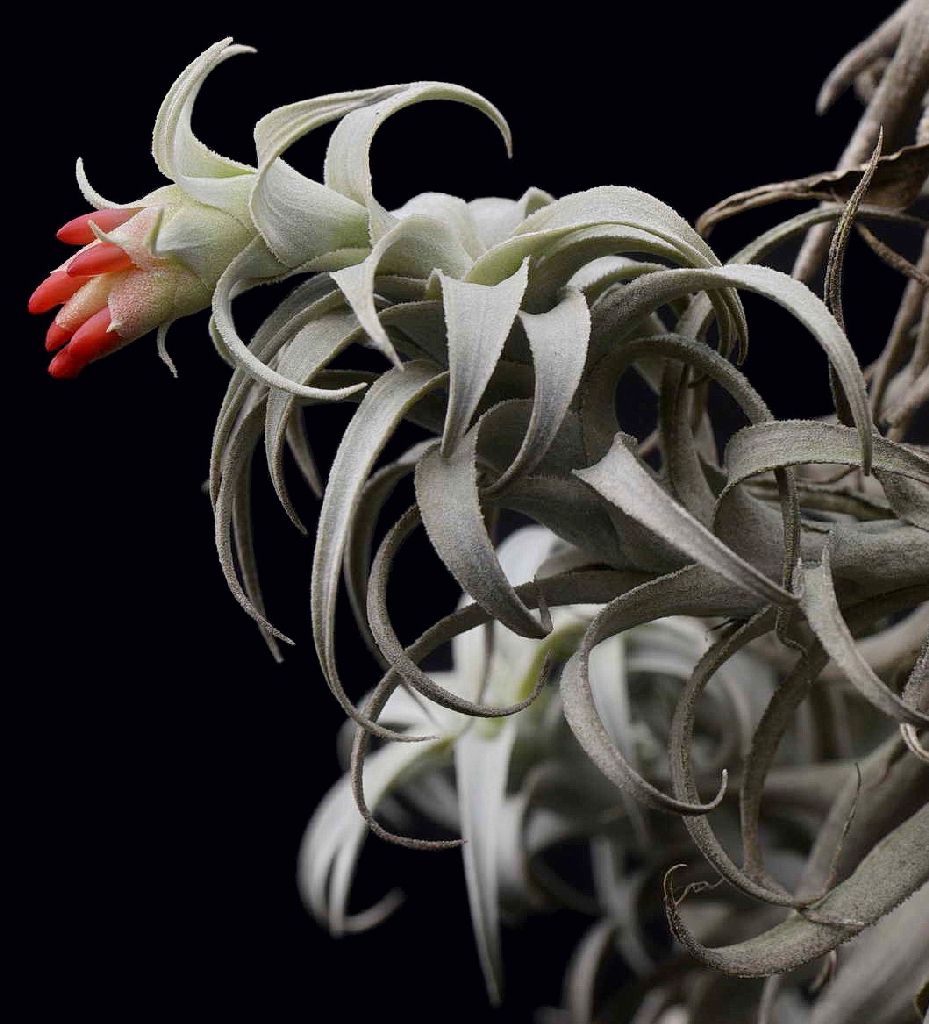
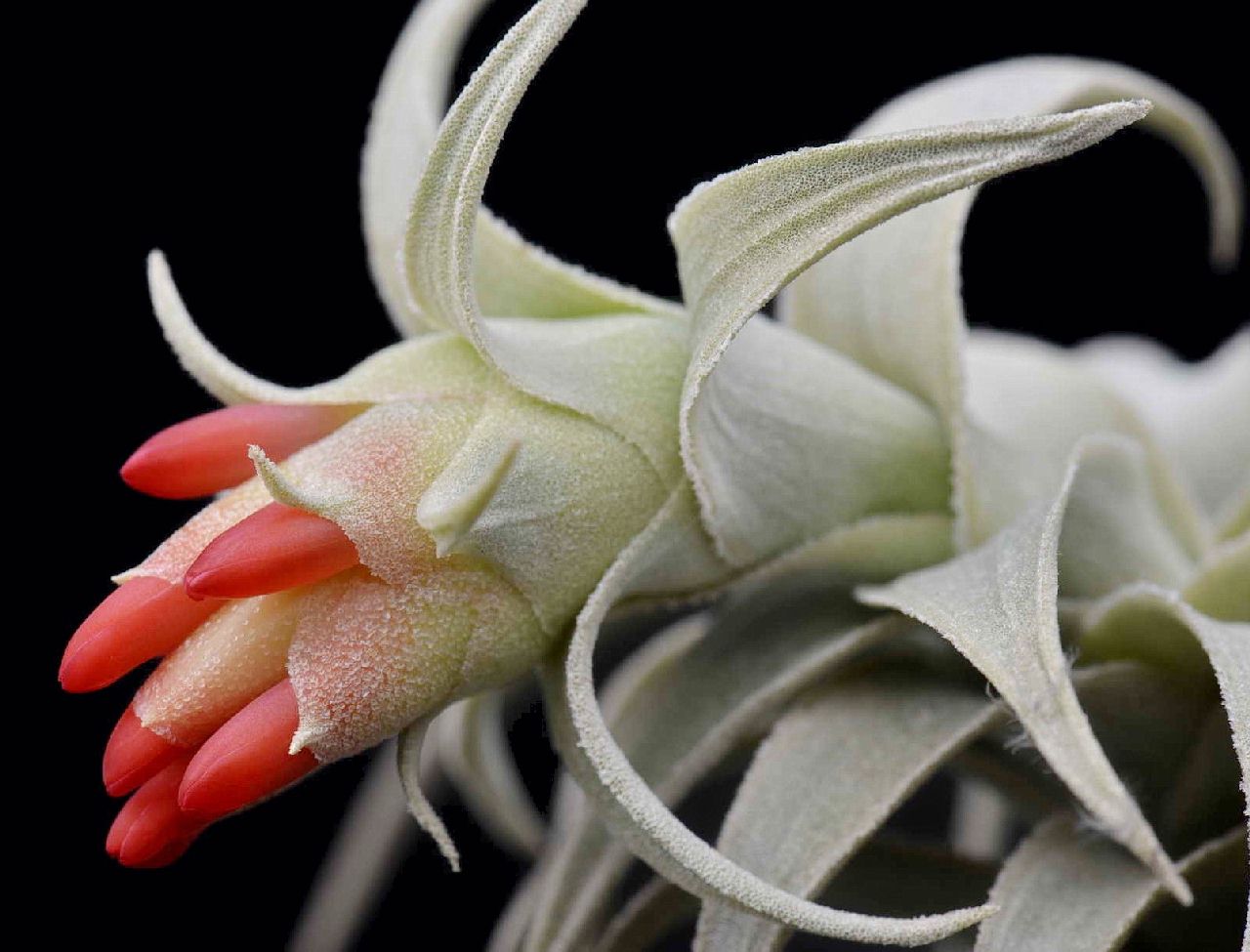
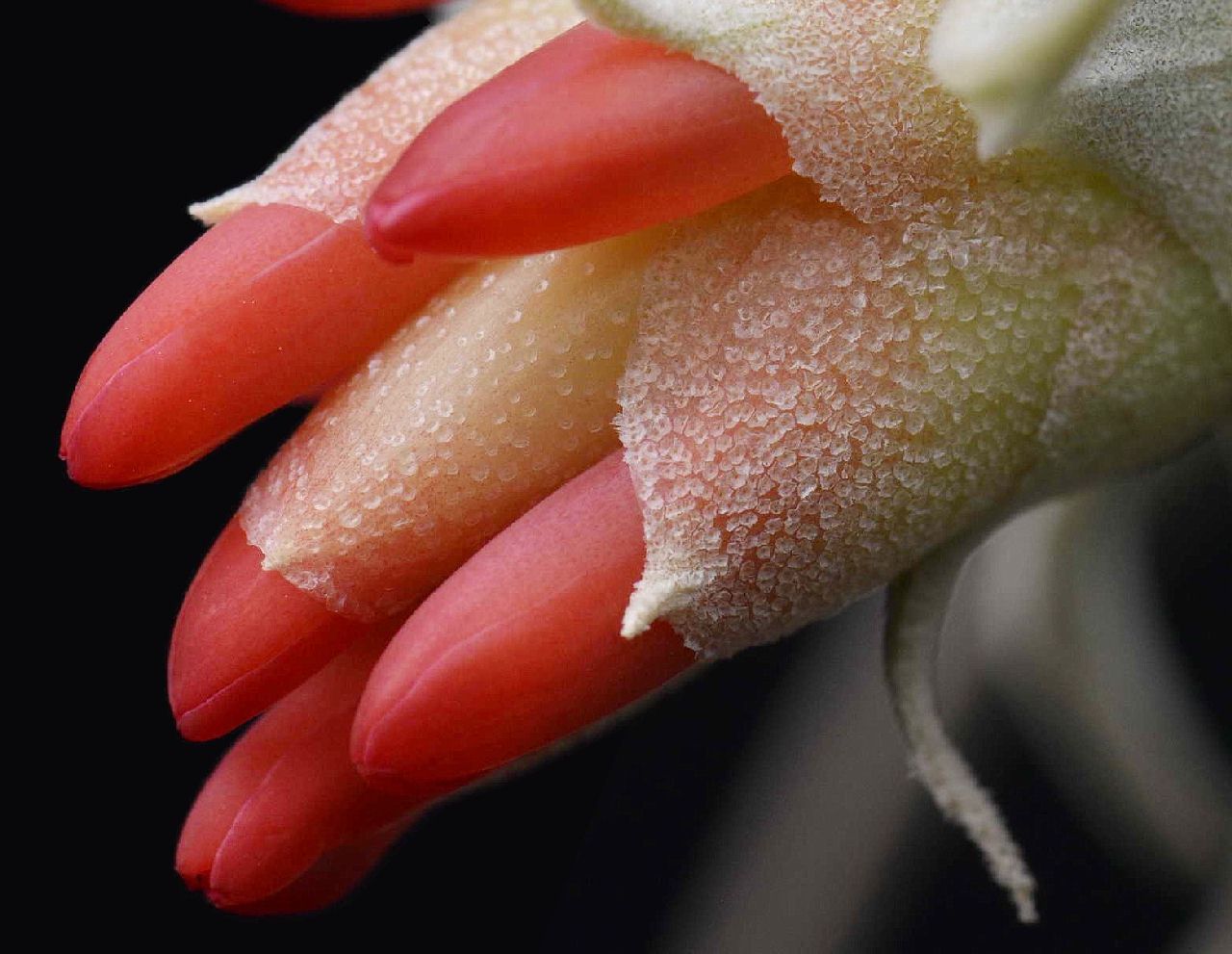
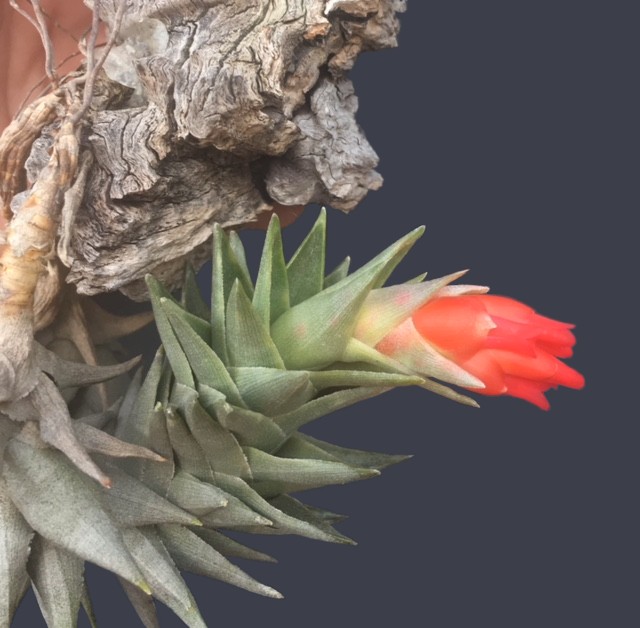
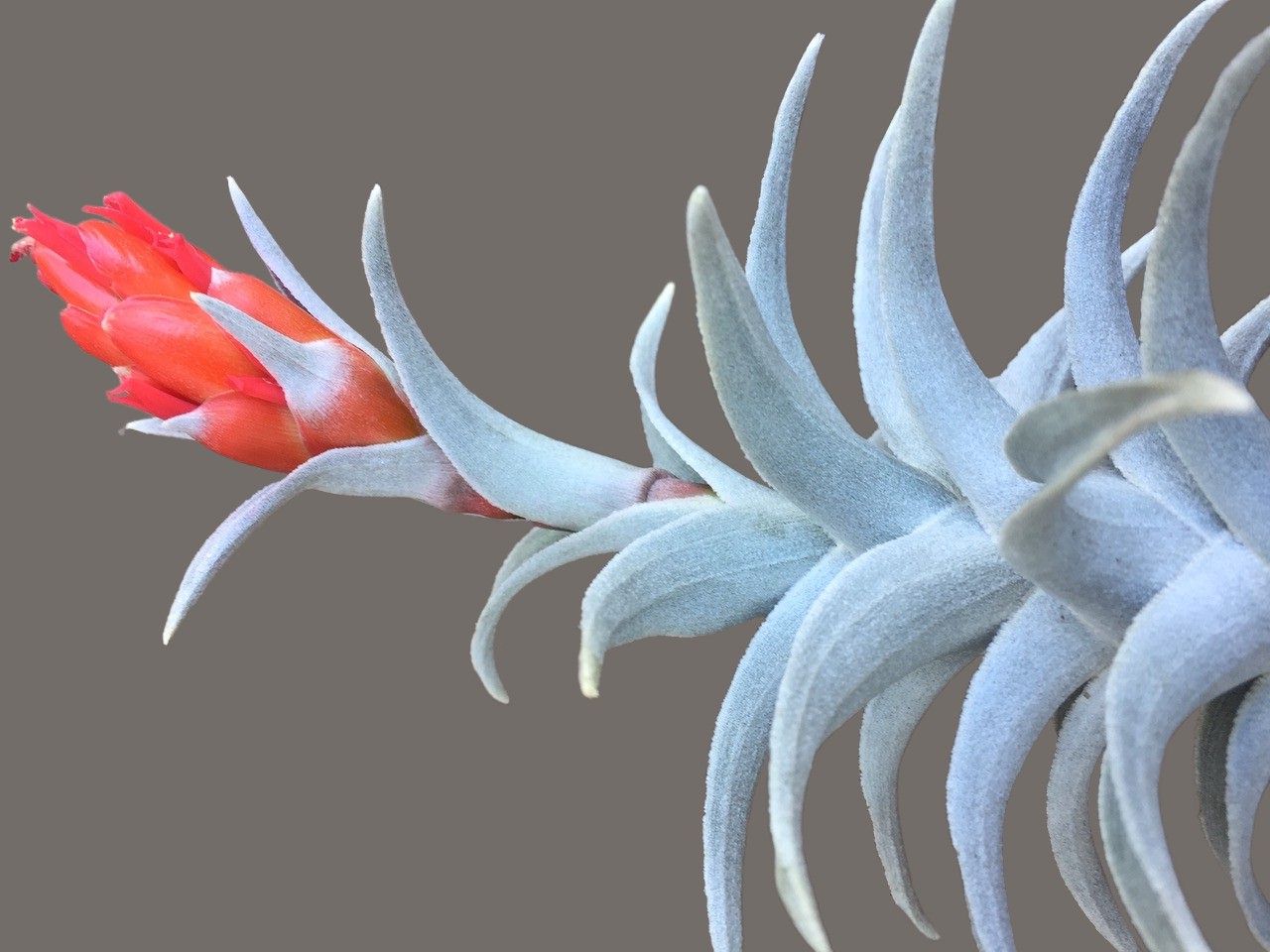
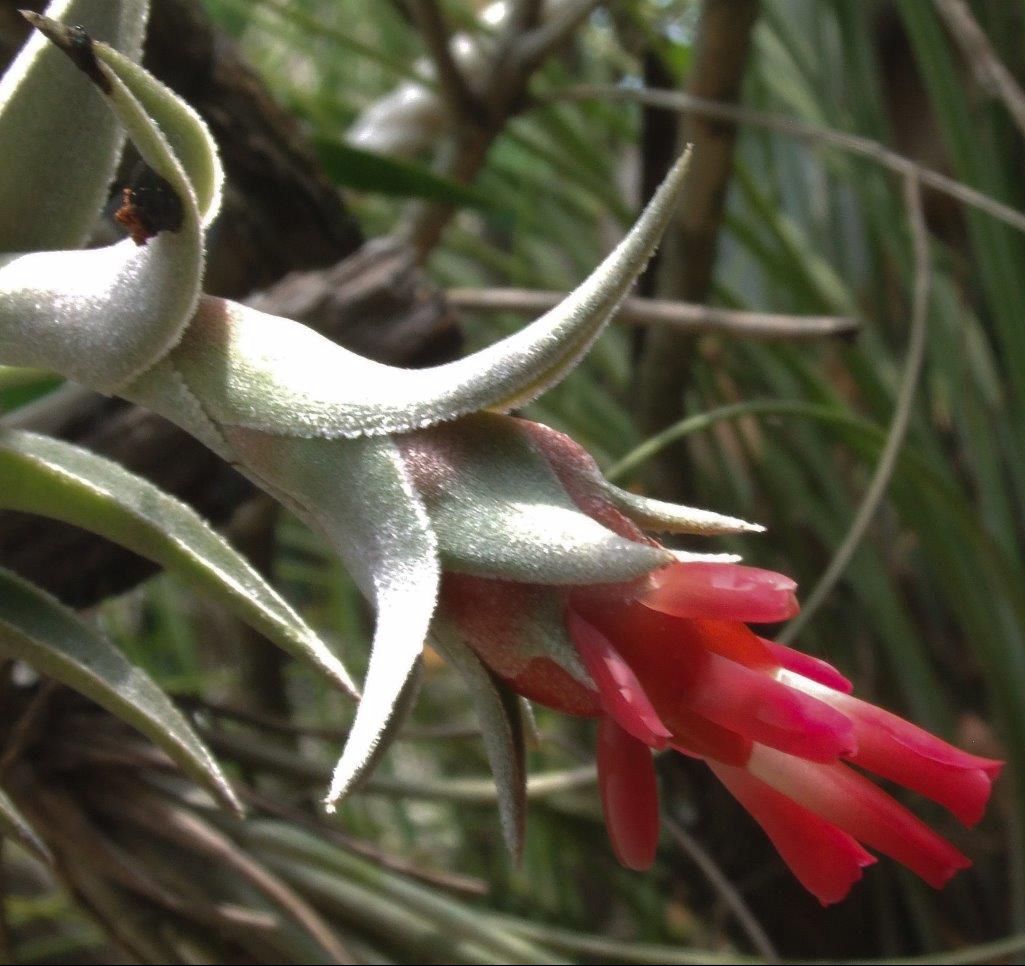
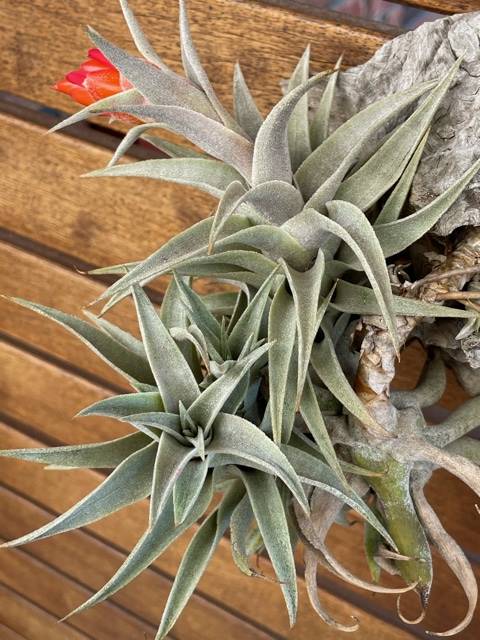
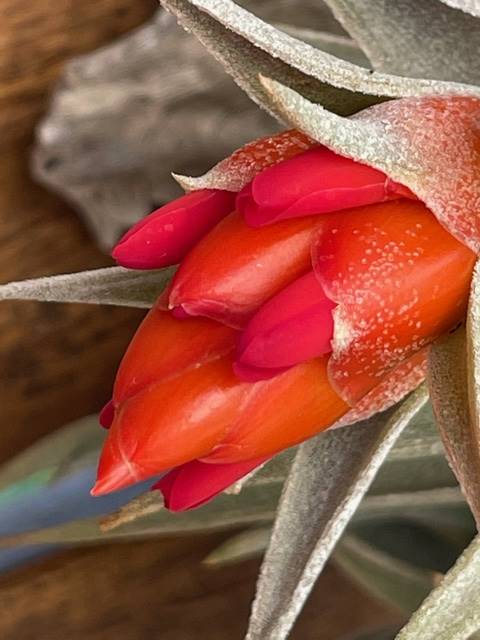
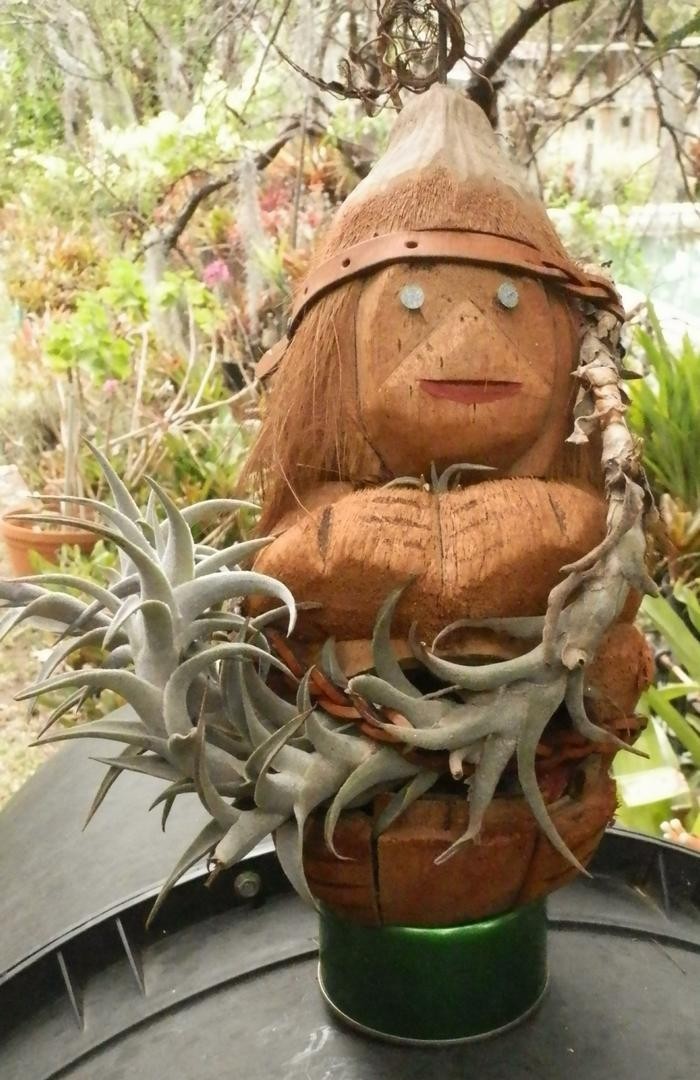
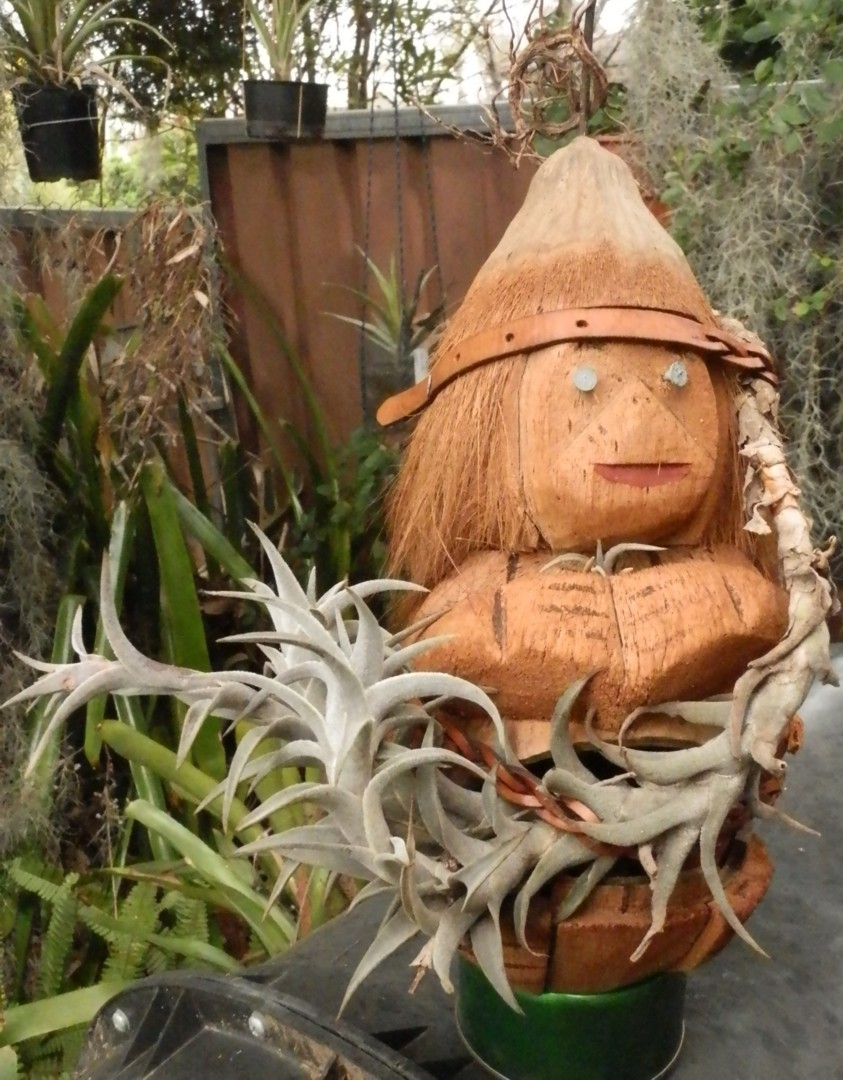
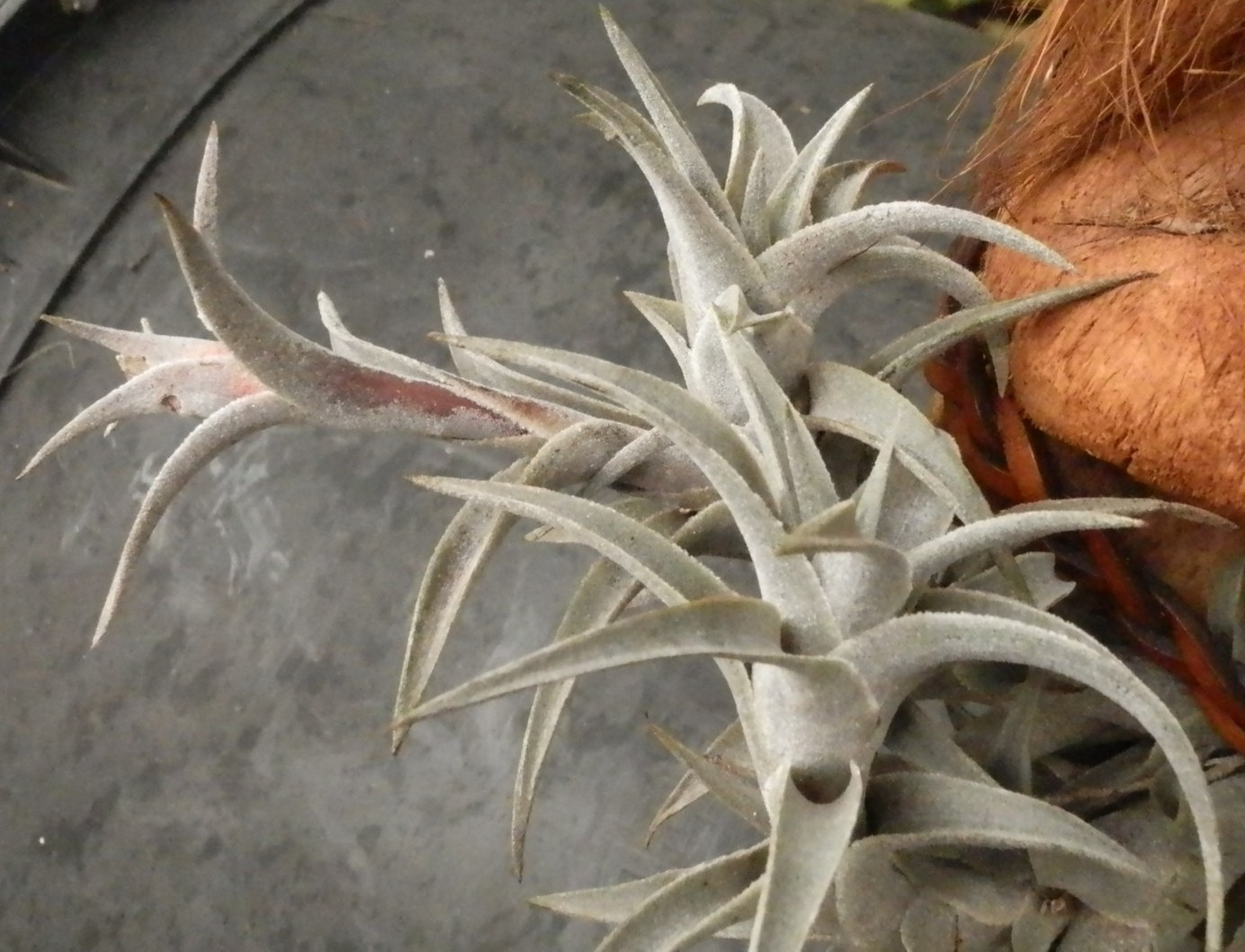
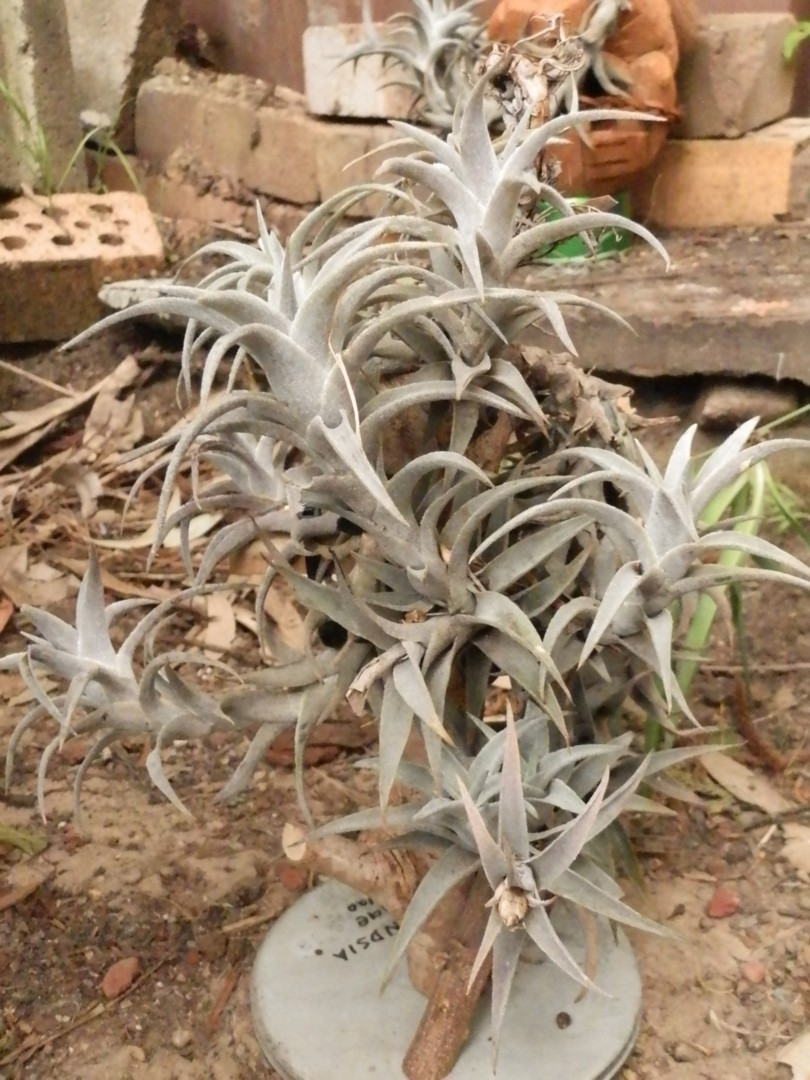
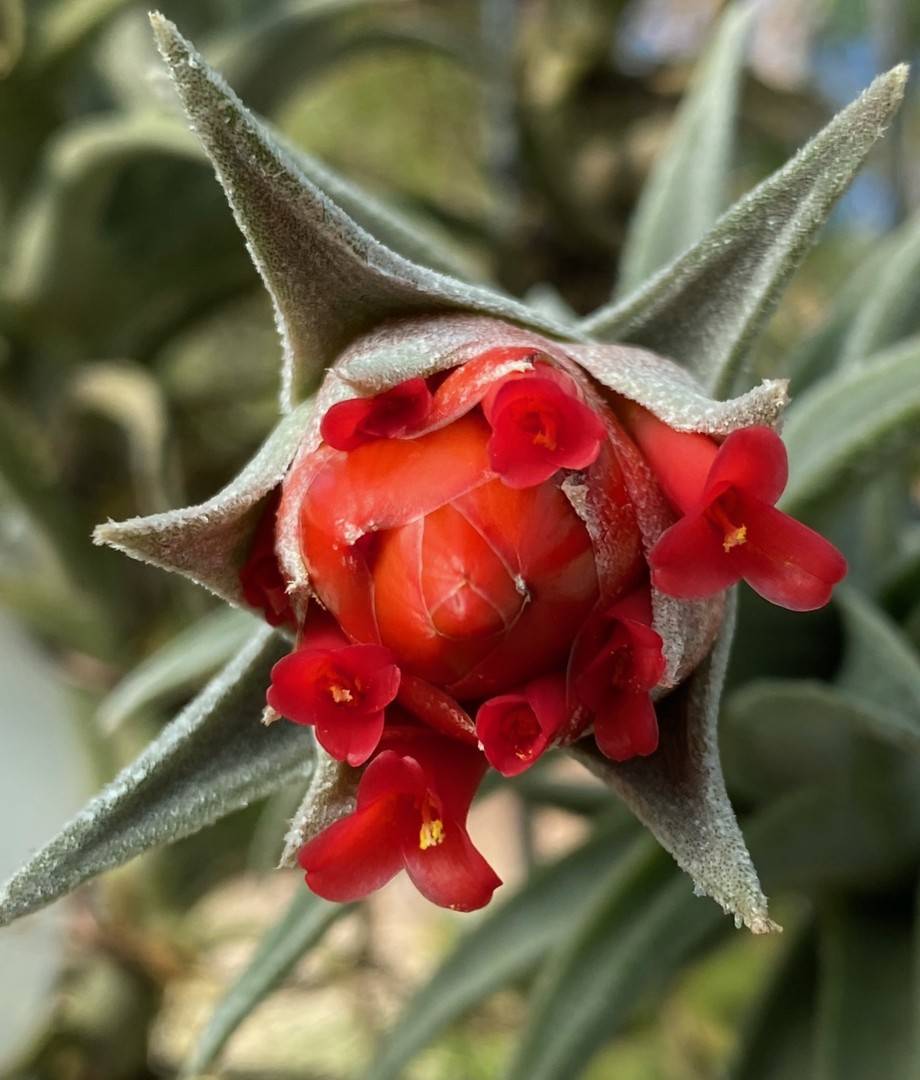
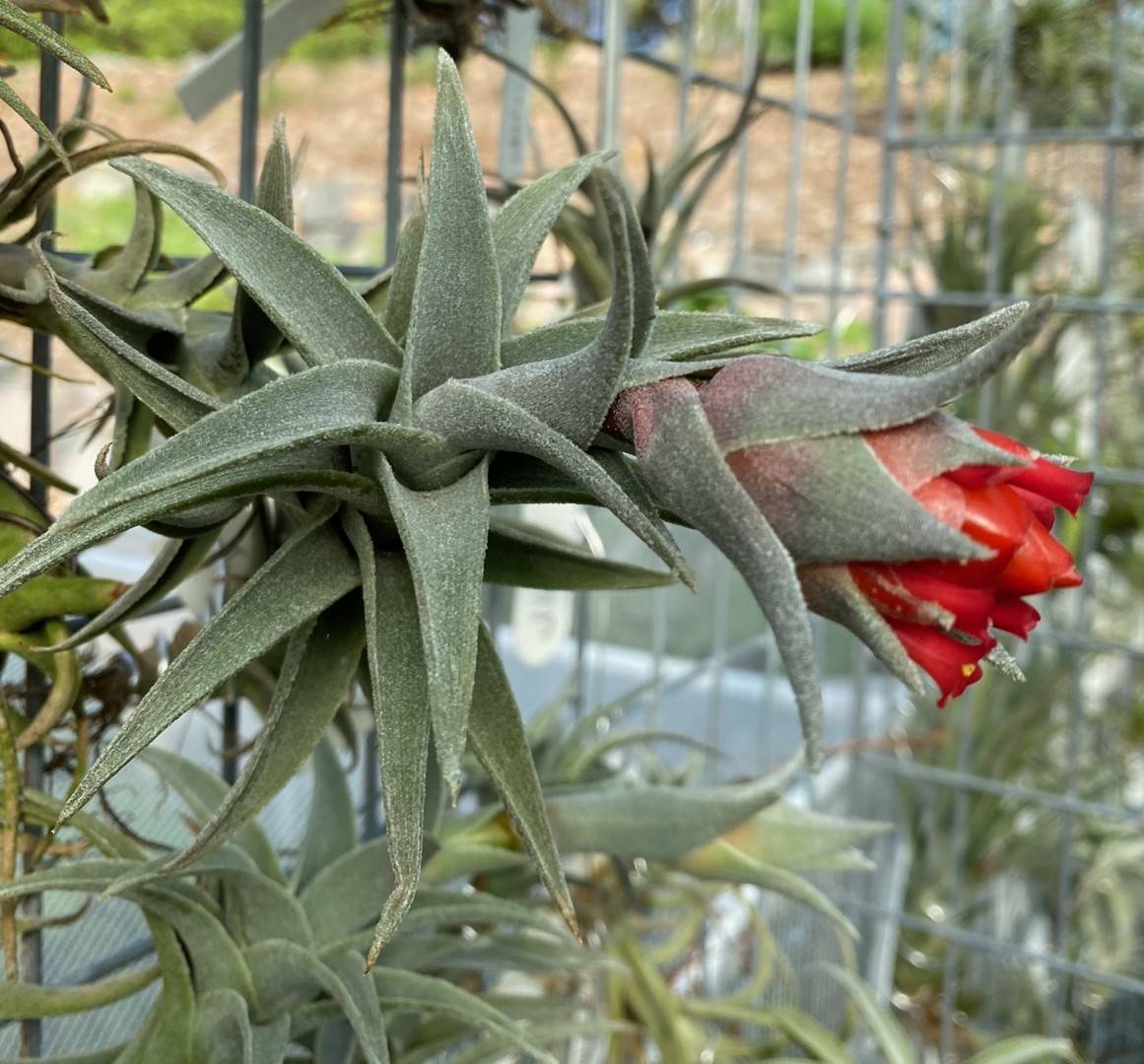
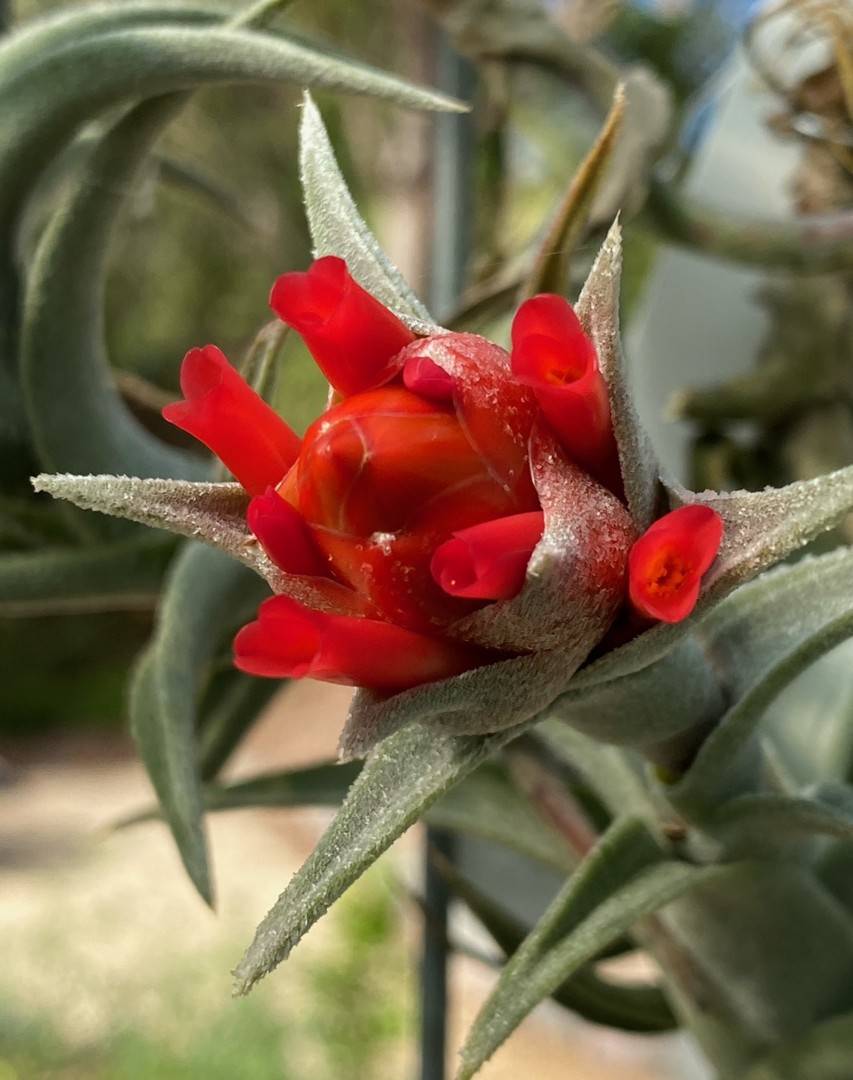
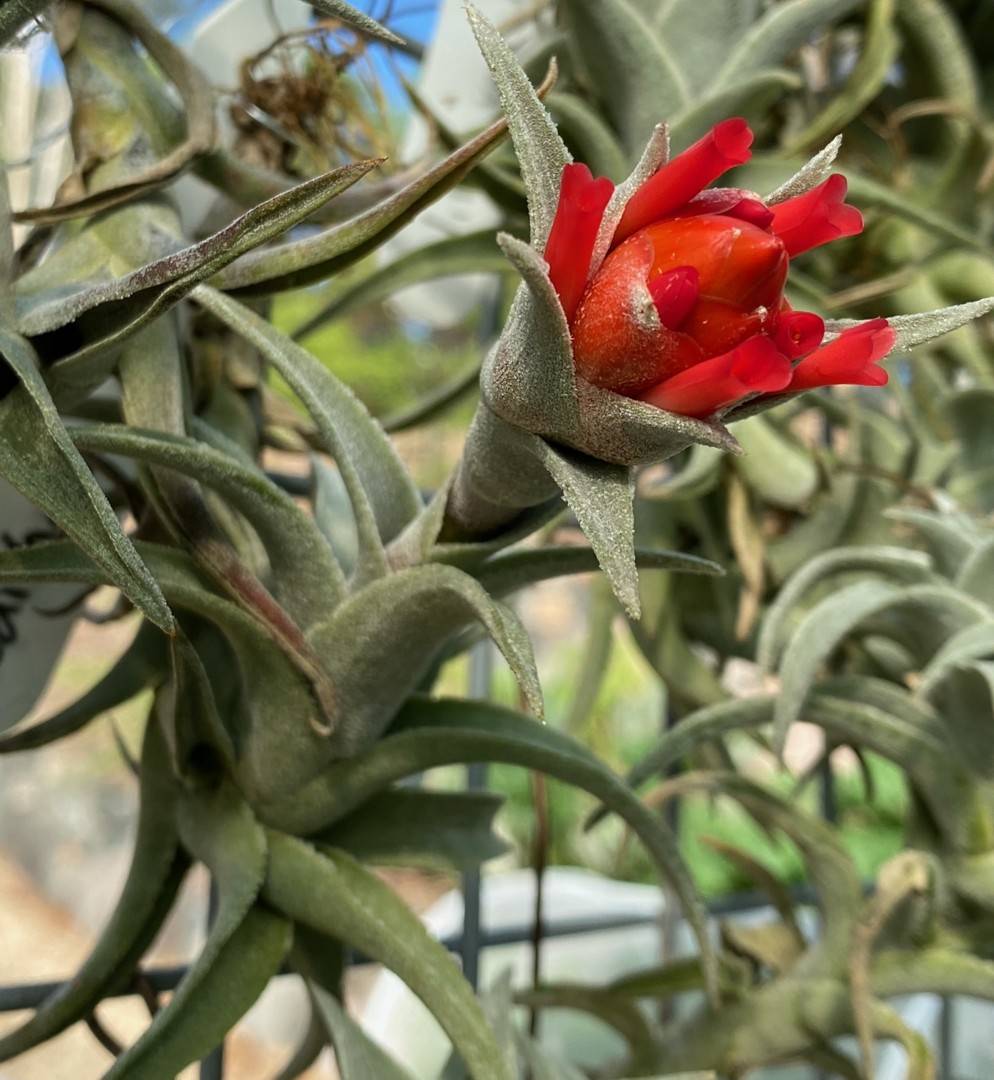
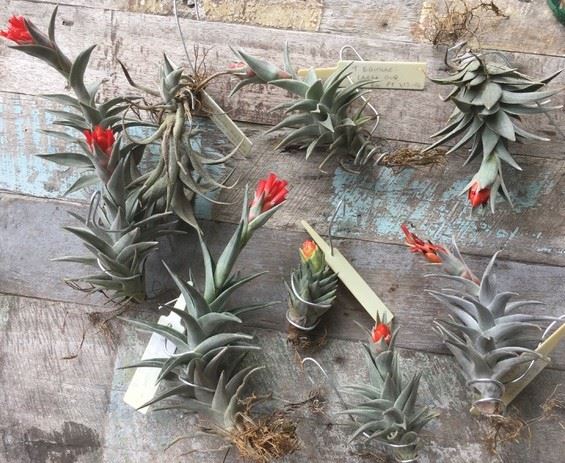
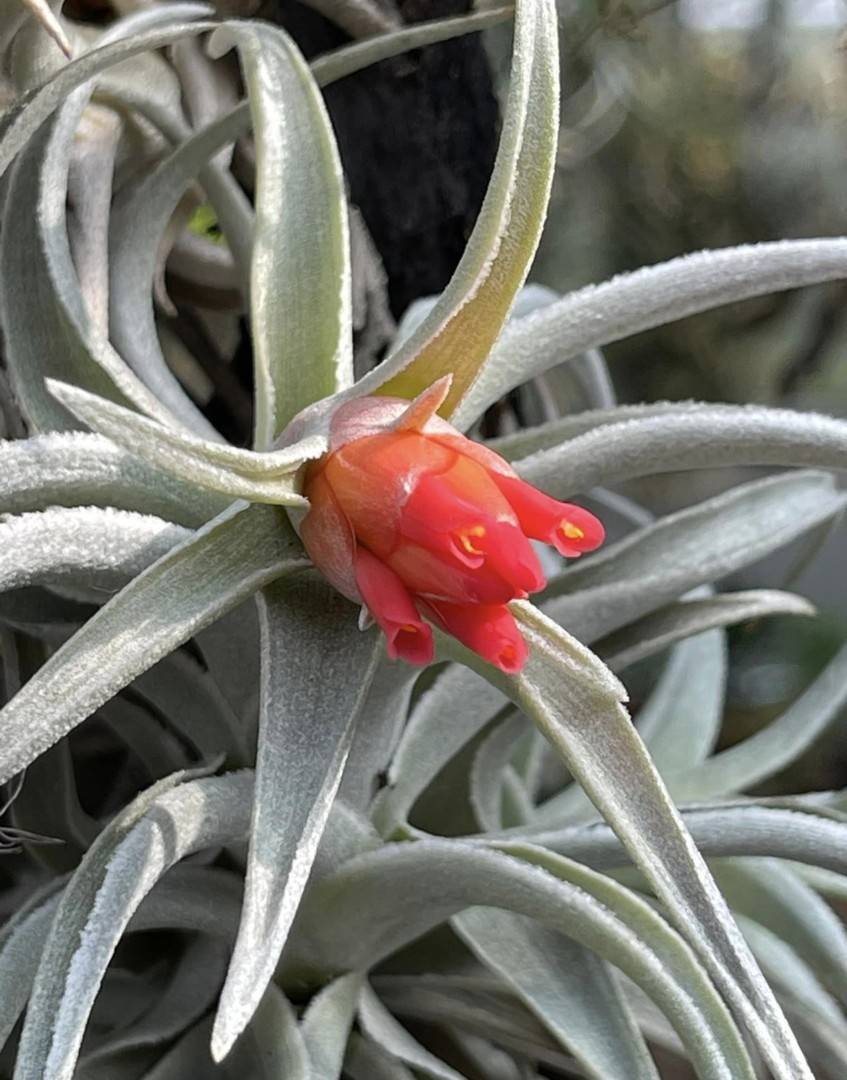
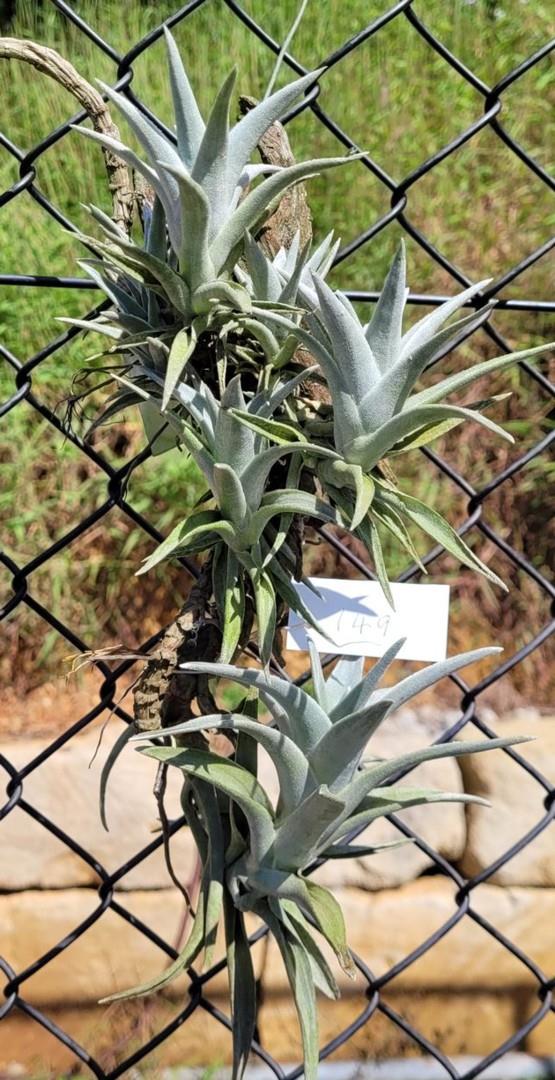
From Till in Linzer biol. Beitr. 27/1: 413-421. 1995
Tillandsia edithae RAUH, Trop. Subtrop. Pflanzenwelt 8: 19, Abb. 7 (1974).
Bolivia, Dept. La Paz, Prov. Larecaja, Sorata, 2700 m, Krahn K 295, ab hort. Heidelberg 1975, (HAL, isotype).
NOTE ; The type locality given in the protologue is wrong and has been confused by A. Blass (who had brought the plant to W. Rauh's attention) with the data given for K/285 in Krahn's list of field numbers. W. Krahn actually collected this plant in 1964 under his number K/295 in the Dept. Sta. Cruz, Prov. Florida, 338km along the street from Cochabamba to Sta. Cruz, Quebrada Chaupiuno, 2500 m.
DISTRIBUTION. Known only from the type collection.
3. Tillandsia edithae RAUH spec. nov. Trop. Subtrop. Pflanzenwelt 8: 19, Abb. 7 .1974
Planta longe caulescens usque ad 35 cm longa, pendula vel ascendens; folia numerosa, dense inserta, polysticha, expansa vel reclinata; vagina indistincte; lamina breviter triangulata, acuminata, 6-7 cm longa, basi 2-2,5 cm lata, viridis dense et grosse cano-, fere pruinoso-lepidota ; scapus brevis, 3-5 cm longus, arcuato-ascendens, teres, pallido-viridis, glaber, 5 mm diametiens ; folia scapi dense inserta, polysticha, subfoliata ; inflorescentia congesto-capitata, simplex, 4 cm longa, 2 cm lata, 8-12 florea; bracteae florales longiores quam sepala, basales apice 5-10 mm longo, 2 cm longae, 1-1,9 cm latae, cucullatae, ecarinatae, basi virescentes, glabrae, ad apicem versus rubrae, dense et grosse cano-lepidotae ; sepala libera, alba apice rubro, 1, 4 cm longa, 5 mm lata, posteriora carinata, glabra ; petala 3 cm longa, 4 mm lata, lingulata, apice rotundata, modice patentia; dimidio inferiore alba, superiore lucido-rubra; stamina 2,5 cm longis, antherae 5 mm longae in parte superiore floris inclusae.
Habitat: Bolivia, Sorata, Dept. La Paz, Prov. Larecaja apud 2700 m. s. m.
Holotypus : A. Blass K 295, in herbario inst. bot. system. heidelbergensis (HEID).
Die in dichtem Rasen an steilen Felswanden wachsende Pflanze besitzt verlangerte, bis 35 cm lange (wahrscheinlich noch langer werdende), hangende, an den wachsenden Spitzen aber bogig aufsteigende Stammchen, die in dicht spiraliger Anordnung kurzdreieckige, zugespitzte, 5-6 cm lange, oberhalb der nicht deutlich abgesetzten Scheide 2-2,5 cm breite, etwas sukkulente, beiderseits groB, fast pruinos grau beschuppte Blatter tragen (Abb. 7, links). Der kurze, 3-5 cm lange und etwa 5 mm dicke, kahle, runde, grune Infloreszenzschaft wird von spiralig angeordneten, subfoliaten, dicht grau beschuppten Hochblattern umhullt, von denen die obersten bisweilen dicht gedrangt stehen und eine Art Involucrum um die kopfige, einfache, etwa 4 cm lange und 2 cm breite, 8-12-blutige Infloreszenz bilden (Abb. 7, rechts). Die floralen Brakteen sind langer als die Sepalen; die basalen tragen eine kurze Spreite, die apikalen sind spreitenlos; sie sind etwa 2 cm lang, bis 1,9 cm breit, ecarinat, cucculat, an der Basis grunlich, gegen die Spitze zu rotlich und dicht grau beschuppt ; von den weiBen, hautigen, bis zum Grunde freien, 1,4 cm langen und 5 mm breiten Sepalen sind die hinteren carinat, das vordere ecarinat. Die 3 cm langen und 4 mm breiten Petalen sind an der Spitze abgerundet und leicht spreizend; in der oberen Halfte sind sie leuchtend zinnoberrot, gegen die Basis zu weiBlich; die bis 2,5 cm langen Staubblatter und der bis 2 cm lange Griffel sind in der Blute eingeschlossen (Abb. 7, rechts).
Der Fundort dieser zur Bliitezeit sehr attraktiven Tillandsie sind steile Felswande in einer Hohenlage von 2700 m bei Sorota, Prov. Lare¬caja, Dptm. La Paz in Bolivien. Die Pflanze wird in der Sammlung von A. Blass unter der Nummer K 295 kultiviert.
T. edithae gehort in den Verwandtschaftskreis der in Sudperu in Trockentalern verbreiteten und an ahnlichen Standorten wachsenden T. caloce¬phala Wittm. Sie unterscheidet sich von dieser aber durch die einfachen und nicht zusammengesetzten Infloreszenzen sowie die leuchtend zinnoberroten Bluten, die bei T. calocephala von blaB- bis dunkelvioletter Farbe sind. Auch sind die Blatter jener weniger sukkulent und weniger pruinos beschuppt. T. edithae ist bisher nur vom Typstandort bekannt.
Named after Edith Blass, wife of A Blass, from Munich who flowered the plant under cultivation
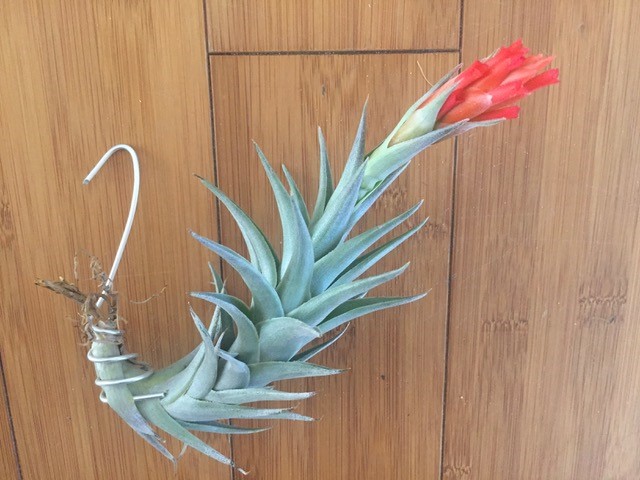
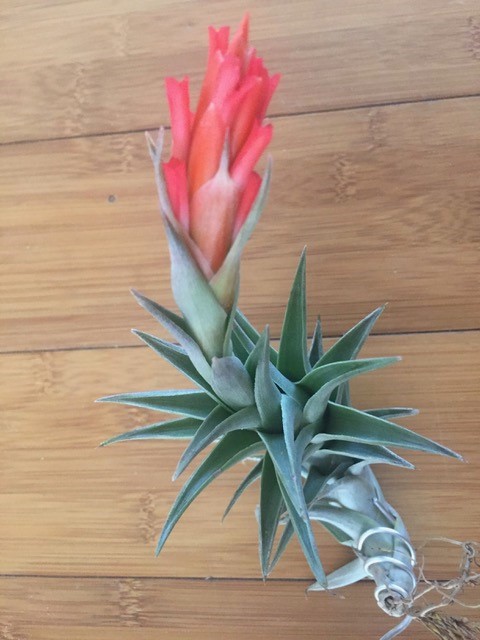
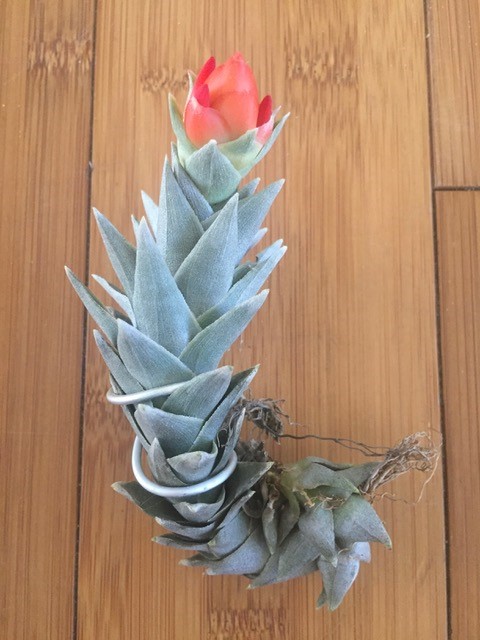
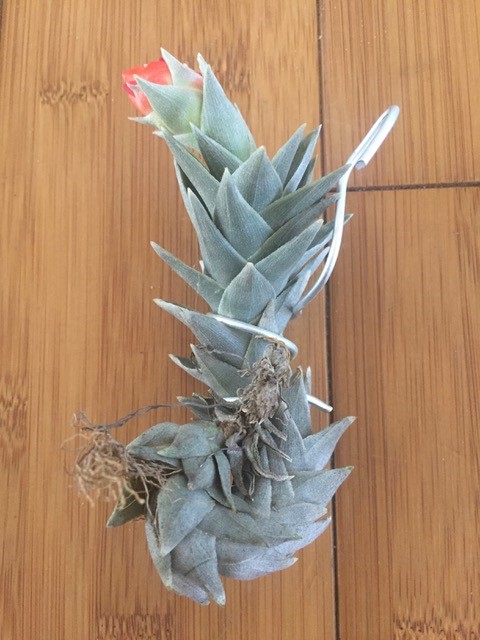
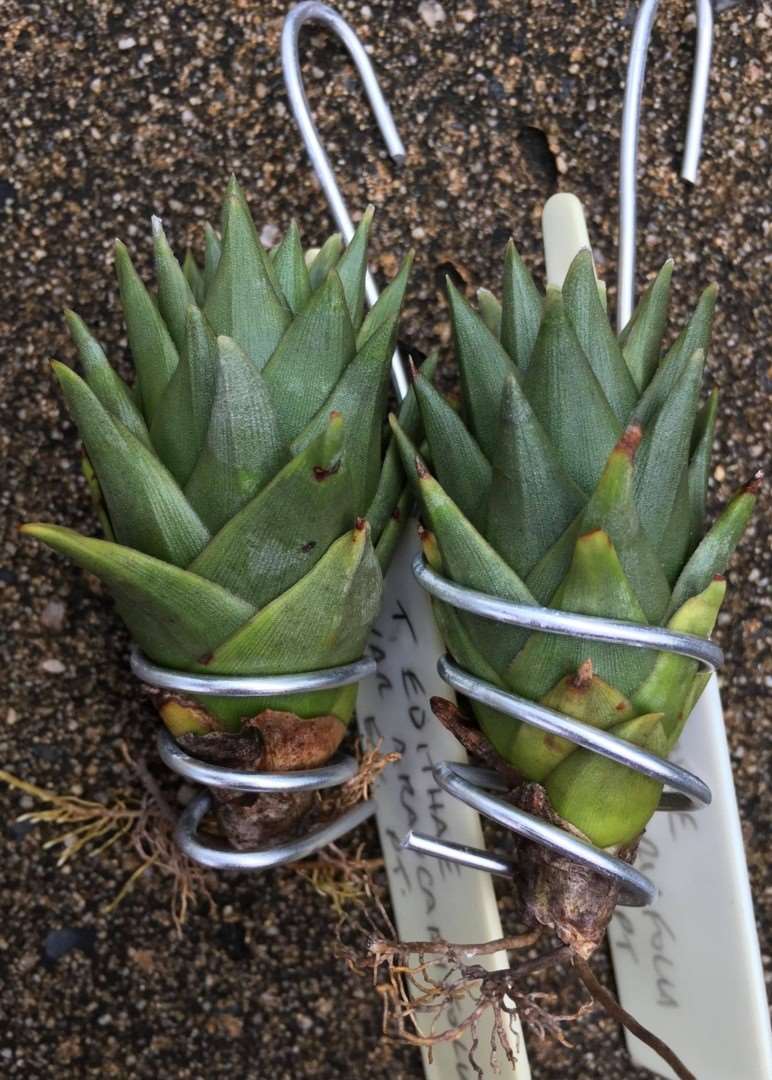
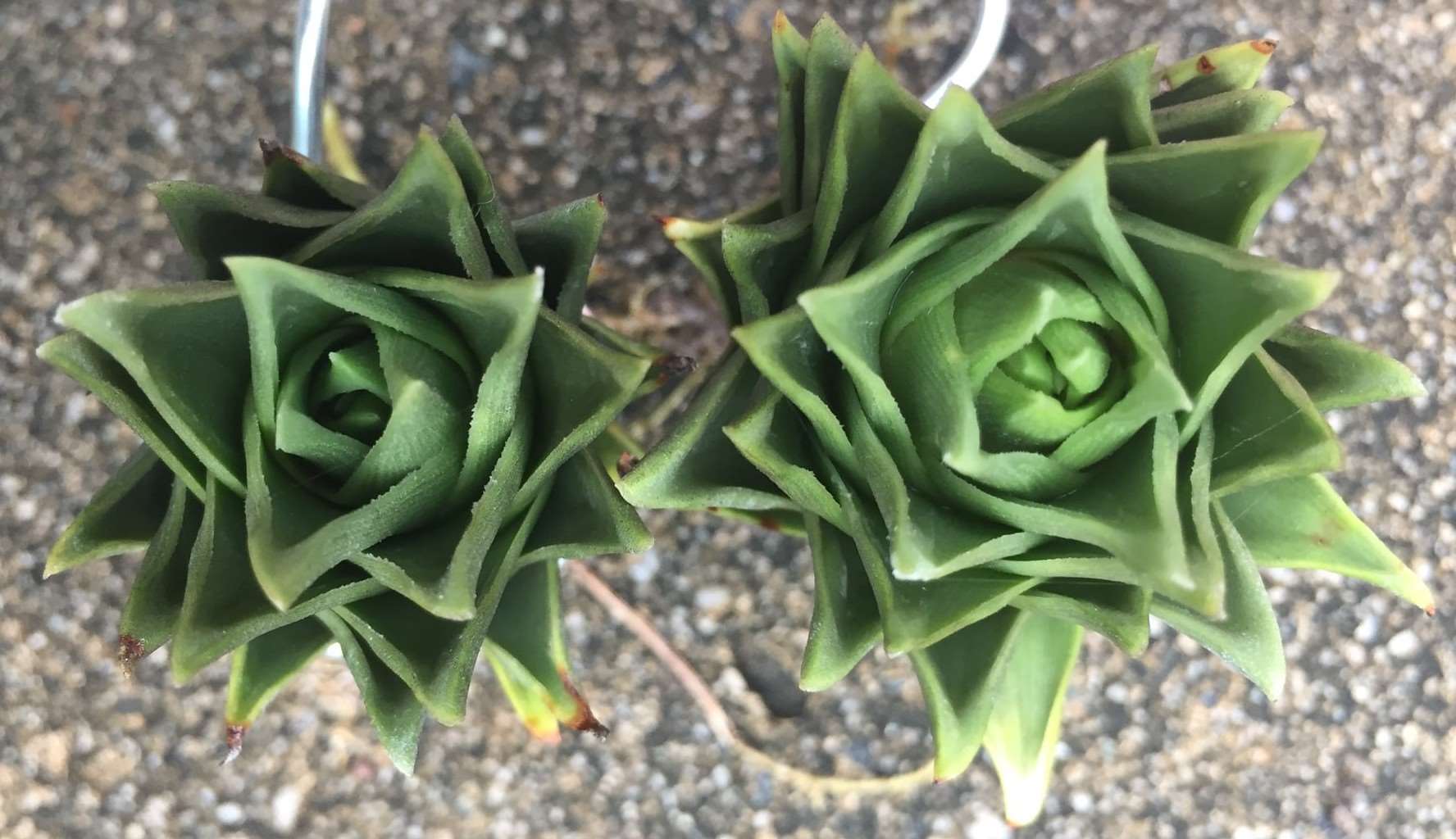
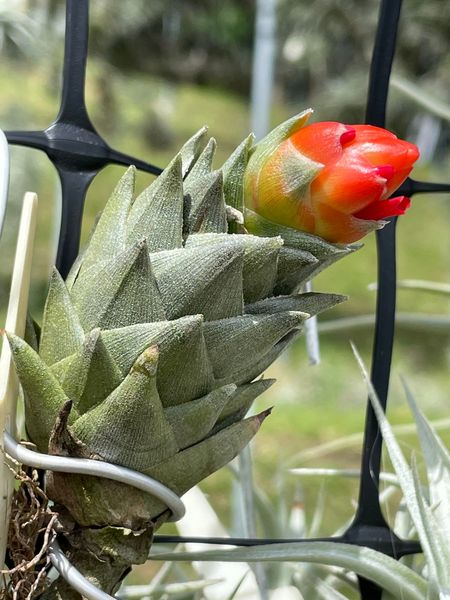
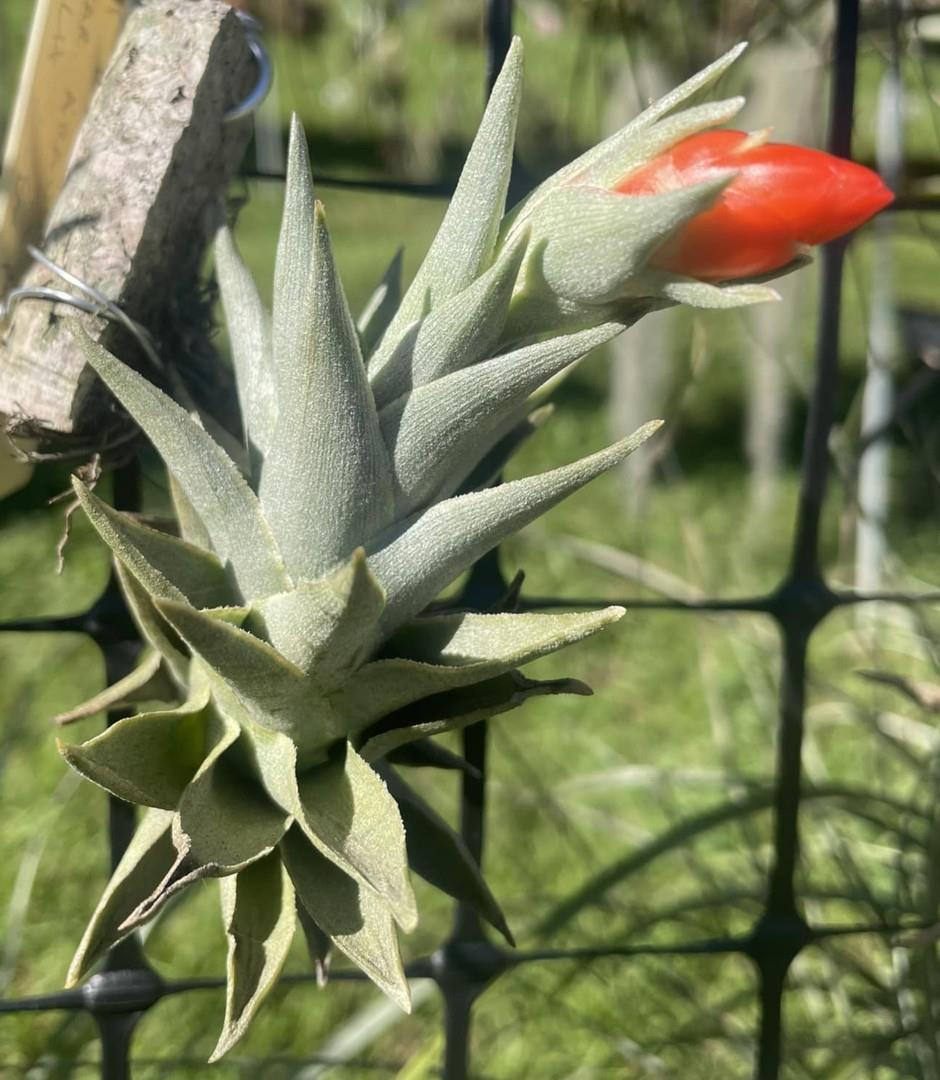
Tillandsia edithae var. araucariifolia Gouda var. nov. (fig. 3,4). J. Brom. Soc 64(2):76-79. 2014. as edithiae var. araucariofolia.
A variety that differs from the type variety in having strict (erect), relatively short, 3-4 cm long leaves ending in a sub-pungent apex (vs. curving leaves 5.5-8 cm long with a more or less flexible apex).
Type: Bolivia, new road from St. Cruz to Cochabamba, 1500 m. elevation, C.S. Gouda s.n. October 1996. Introduced into the Utrecht Botanical Gardens in 2008, flowering June 2014. (holotype L).
Plant long caulescent, 14 cm tall, very dense, with many leaves.
Leaves polystichous, coriaceous, 3-4 cm long, very densely lepidote, on both sides, with subappressed whitish and dark centered scales, cinereous-green;
sheaths large (about half the length of the leaf), with a layer of extending trichomes at the margins, thin coriaceous, indistinguishable from the blades, pale green and membranaceous toward the base;
blades acute and sub-pungent, divergent (sub-erect), somewhat stiffly and more fleshy toward the apex, triangular.
Peduncle short and concealed by the leaves, wholly covered by bracts, erect, 3 cm long, 7 mm in diameter;
peduncle-bracts erect, foliaceous.
Inflorescence simple, fertile part ovoid and acute 3 cm long, 1.5 cm wide, densely 7-flowered.
Floral-bracts ample, inflated, 2.2 cm long, 2 cm wide, many times as long as the internodes, much exceeding the sepals, glabrous except the lepidote apex in the lower ones, bright red, rounded but slightly cucullate or apiculate, erect, very densely imbricate, thin coriaceous, nearly even, ecarinate, sub-orbiculate with thin margins.
Flowers contiguous, subsessile;
pedicel 2 x 5.5 mm long, strongly complanate and bicarinate.
Sepals membranaceous or chartaceous, 11-13 mm long, 4.5-5.5 mm wide, with broad hyaline margins, evenly short connate for 1.5 mm, glabrous, few nerved, elliptic, rounded or slightly cucullate obtuse, pale (whitish) green, adaxial ones distinct from the anterior ones, carinate and strongly incurved.
Petals fleshy, 23-25 mm long, 3.5 mm wide, ligulate, rounded, bright red.
Stamens included; filaments strap shaped and flaccid, straight (not plicate), 1.8 cm long;
Anthers dorsifixed at about one fourth of its length from the base, linear-sagittate, obtuse, 3 mm long, pale yellow.
Pistil slightly exceeded by or about equaling the stamens;
ovary complanate ovoid, 5 mm long, tapering into the style;
style slender, elongate and many times as long as the ovary.
Etymology: the plant resembles a short branch of Araucaria araucana (Monkey-puzzle tree) . Araucario (like Araucaria) - folia (leaves).
Although this variety is very beautiful, it is not easy growing like the typical variety.
It grows very slowly: only doubling in size during the last 6 years and flowering for the first time now. Only one of the original 3 shoots has flowered and now it is going to produce small pups at the base.
Notes
In 1974, Werner Rauh described the stunning Tillandsia edithiae Rauh (1974: 19), with its bright red inflorescence and fleshy red corolla, from La Paz, Bolivia. The species is quite variable and plants from several populations look different. The most common form has somewhat purplish tinged cinereous leaves and in 1995 we saw steep mountain slopes fully covered with this plant in the province of Santa Cruz, Bolivia, indicating that it is locally very abundant. Near Samaipata we collected a very short leaved and succulent form that unfortunately did not survive. Some populations have somewhat larger plants with leaves about 8 cm long (Fig. 1) and others look similar but with shorter leaves of about 5.5 cm long. In cultivation they can grow to over half a meter in length, developing many offshoots on the old leafless stem. Although beautiful, they do not flower often. In a clump of the several shoots, normally only a few will flower at the same time and some of my clumps have never flowered.
There are also more green forms that do not develop that purplish leaf coloration, even when hanging at the same location (see Fig. 2 also from Samaipata). In fact each population looks slightly different and it would not be practical to give all those forms a name except for the very obviously different ones, like the variety described in this article.
HOLOTYPUS HIC DESIGNATUS: PR119'75; 20.11.2007, leg. J. J. Halda (JJH07112002).
PATRIA ET DISTRIBUTIO: Bolivia department Chuquisaca: saxetum verticalium prope urbi Nuevo Mundo 1750m supra mare.
DESCRIPTION: From similar T. edithae Rauh differs in having tiny bright red flowers with very short tube and succulent leaves, densely covered with rusty scales.
Plant caulescent pendant usually up to 200 mm long;
Leaves many, wide rosulate, up to 100 mm long, rigid, including sheath barely 25 mm wide, narrowed into sharp tip, whole rusty scaled;
Floral stem shorter than leaves, densely scaled, covered with ovate-lanceolate bracts;
Inflorescence many-flowered, very densely paniculate, the same length or a bit shorter than leaves, usually up 20 flowers in 1-3-branched panicle covered by primary bracts,
Primary bracts prominent, elliptic, acute, dorsally densely scaled;
Floral bracts ca 5 mm apart, outside bright red, much longer than calyx, suberect, elliptic, acute, up 25 mm long, not carinate, covering the calyx.
Flowers up 25 mm long, with petals somewhat free, outside glabrous, almost elliptic, widely acute, up to 15 mm long, bright red, somewhat rhombic, obtuse, at full bloom campanulate.
Anthers reach ca one half of petals; style elongate.
Fruit brown up to 15 mm long.
Seeds brown, oblong, tiny.
DISTRIBUTION: Bolivia, department Chuquisaca: dry bare vertical rocks up Nuevo Mundo at altitude 1750m above sea level.
Not cultivated yet.
Correspondence:
From: Derek Butcher. To: Eric Gouda
Subject: Tillandsia barborkae
Eric, Walter & Harry
Ever since this was published I have thought it to be a synonym of T. edithiae
The protologue says inflorescence compound but the drawing shows simple. I did ask Halda for a photo but got no reply.
Needless to say unofficial names for T. edithiae, like green form, orange flowered, etc are around
Any thoughts as to treating this as a synonym?
Derek
From: Harry Luther. To: Derek Butcher
Its the same as T. edithiae, will be treated as such in the next binomial list.